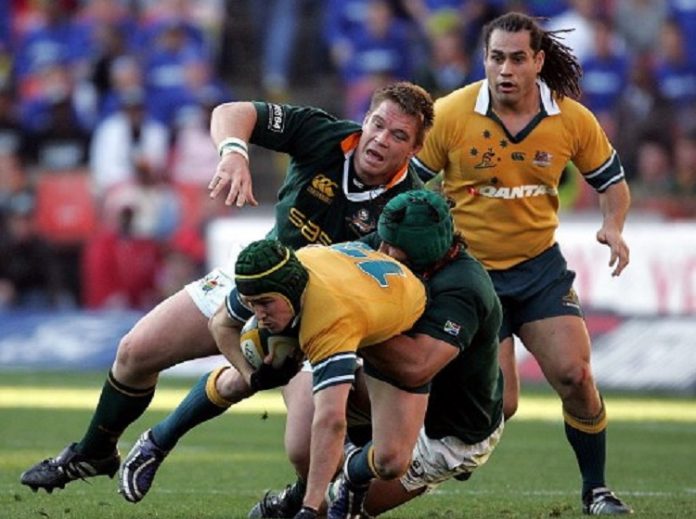I still remember that day like it was yesterday. The world had not seen anything like it before. A larger than life beast with the number ‘11’ on his back either swatting away intended tacklers like they were pesky flies, or simply mowing them down en route to scoring. Try, after try, after try. It was the 1995 World Cup, and Jonah Lomu, the world’s first recognized megastar, had arrived!
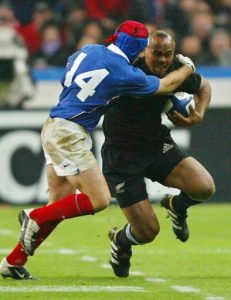
Having a bloke who was 1.96 meters tall and weighing 120 Kgs playing out on the wing was a rarity back in the day. But when that frame can shift across 100 meters in 10.8 seconds, why not? The results spoke for themselves. Sadly, big Jonah is no longer with us, having eventually lost his long, troublesome battle with a kidney disorder. He was only 40 at the time of his passing, but, his legend will live on in the memory till the game ceases to be played. It makes you wonder how much more destruction he could have evoked had his health not been stifled throughout his career.
You fast forward to today’s modern ‘power and pace’ game, such athletes are now more common place. It’s been over two decades since rugby union went professional. There is huge emphasis made on nutrition and conditioning, which in turn has seen players take the field not only fitter, but much more muscle bound than those of the bygone eras. In some respects, you feel that the ‘gym monkey’ has replaced the guile and swift-footedness of the stars of yesteryear. But the best of the best seem to find a way to strike a perfect balance – look no further than the All Blacks who sit on the summit of rugby’s Mount Everest. However, stronger and bigger players have meant that they take up more space on the rugby field. This means that the open spaces are now very limited. It’s a very simple equation really. Therefore, to break down good opposition, teams must find creative ways to open-up space. More often than not, that now involves using big ‘ball carriers’ – perhaps a barnstorming number eight, or a ‘crash ball’ inside centre to blast holes in the defense. The impact of some of the collisions are huge, heard way back in the stands.
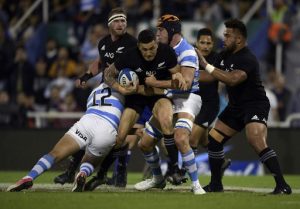
It’s clear that the toll on the body is far greater than what it used to be. I dare say that players are sufficiently conditioned to deal with the effects of the contact. In fact, data shows that the number of injuries amongst professional players has been relatively static over the last eight years. However, the start of the premier domestic season in the UK has seen an unprecedented number of players crocked and resigned to lengthy spells on the sidelines. In the English premiership, 10 of the 12 clubs participating have already suffered a collective of over 80 injuries. Last season’s runners-up, Wasps, are the hardest hit. They began October with 15 players confined to the treatment room.
Welsh Pro14 side Dragons are another team dealt a cruel hand with as many as 24 players still in their sick beds. The team is coached by Bernard Jackman, a hard-man hooker for Leinster and Ireland in his day. He is no doubt well accustomed to the rigours of rugby. But he certainly didn’t expect to be short of 48% his squad, this early in the season. This has resulted in Jackman taking a rather pragmatic view, arguably one tinged with pessimism. “I plan now that for any given match I’m going to be missing about 30% of my players. Most coaches are facing that at the moment. I think 20% missing would be decent at the moment. You’d be happy with that. Nobody’s escaping from this”, said the Irishman.
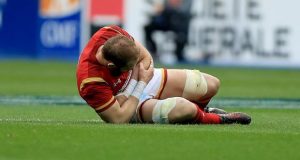
Incidentally, it is suggested that hookers are most likely to be injured during a game. This was revealed following a three-year medical study in France. But that has little effect on Jackman. “For 21 years I have been a professional player or coach, and I’m still loving it. Hookers carry quite a bit of ball; defensively you’re making more tackles, trying to catch up with the flankers. But it’s a great position to play – if my son wanted to play hooker, I certainly wouldn’t try to talk him out of it”
The concerns around rugby injuries, and resulting effects in later life has sprung some serious debate over the last couple of months. In the UK, some academics have called for tackling and scrums to be banned in school rugby with a view to protect children from the risk of concussion and later brain damage.
Allyson Pollock and Graham Kirkwood from the Institute of Heath, Newcastle University, have made requests from the government to remove the tackle and other forms of “harmful contact” from school rugby. In keeping with the governments duty to “ensure the safety of children”, they argue that removing all aspects of collision is likely to “reduce and mitigate the risk of injury”.
Head injuries have been linked to an increased risk of dementia, as well as neuro-degenerative conditions such as Parkinson’s disease. To strengthen their plea, Pollock and Kirkwood have also cited research that reveals rugby having the highest concussion rate amongst children. The results are alarming – 4.18 per 1,000 athlete exposures compared to 1.20 and 0.53 for ice hockey and American football respectively. To this end, a study of New Zealand insurance claims found that an occasional game of rugby to be 500 times as risky as regular cycling.
However, Dr Alan Carson, Reader in Neuropsychiatry, University of Edinburgh, said that while removing collision in sports would cut injury risks, it was still “far from proven” that concussion caused problems in later life.
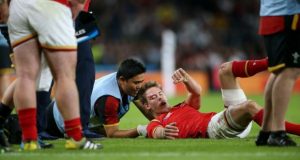
Rugby’s governing body, World Rugby, have also taken a dim view of Pollock and Kirkwood’s claims, dismissing them as “extreme and alarmist”. They go on to question their basis. “The continual claims made by Pollock are not based on like-for-like injury statistics and her extreme and alarmist conclusions are simply not supported by the data. It is well documented that, for most sports, injury rates increase with age, but the quoted research mixes 9-12 with 18-20 age groups.”
To be fair, World Rugby has made a concerted effort to protect player welfare. The introduction of immediate HIA (head injury assessment) by independent Doctors during games, as well as the imposing of more stringent penalties (and consequences) for high tackles and foul play have proved to be a big step in this direction.
Many former players have also spoken out against this proposed ban. Maggie Alphonsi, women’s World Cup-winning flanker was of the view that the “benefits far outweigh the perceived risks”. Will Carling, former England Captain and centre, felt that the authorities should consider “organizing children in weight categories, not age” – a previously implemented system in New Zealand.
Media mogul Piers Morgan proved another unlikely advocate for the game when he tore into Professor Pollock on the Good Morning Britain show, alongside Alphonsi. If you haven’t seen it, it is a ‘must watch’.
I can’t seriously see such sanctions being imposed. But I do feel that the authorities that run the game in their respective territories need to keep exploring opportunities to make the game safer. Over here in Sri Lanka, some things need to be seriously thought through. At schoolboy level, the game is now ultra-competitive, which is largely a great thing. However, the other side of the coin is that players now virtually train all year round. Aside from the collision and the ensuing wear and tear, who monitors what these kids put into their systems? Are they aware of the potentially harmful long-term effects? It would be advisable that the union implements periodic random checks, to ensure that the welfare of our young players is safeguarded.
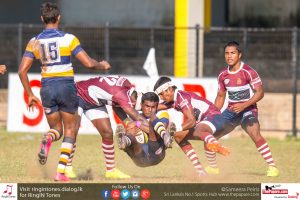
Overall, the timings & schedule of games across all age groups really needs to be looked at.
Enabling your child to play rugby is one of the best educations a parent can provide. It teaches you so much. Commitment, sacrifice, putting the team and others before yourself, and more importantly, how to deal with both defeat and victory. But we still owe it to every young player to provide the safest playing environment possible.
Banning tackling is not the answer. But how we look after players, especially those who suffer injury or more seriously, a concussion is what is vital. Hopefully we will see more effective protocol introduced.

